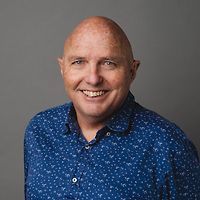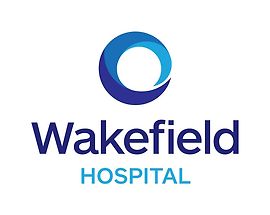Wellington > Private Hospitals & Specialists >
Wakefield Hospital - Endoscopy
Private Surgical Service, Endoscopy (Gastroenterology), Gastroenterology & Hepatology (Liver), General Surgery
Description
Wakefield Hospital is the largest private hospital in the Wellington region. It is located in the suburb of Newtown and is owned and operated by parent company Evolution Healthcare (NZ) Limited.
Based in the heart of Wellington, Wakefield Hospital offers a wide range of high-quality private healthcare services with a team of experienced specialists and the latest in techniques and equipment available. We have a proud history of offering our patients the very best of care in our modern and comfortable facilities.
Private healthcare allows choice, flexibility and access to specialists who use the latest techniques in treatment. You are free to nominate your specialist and can expect your consultation and treatment in a timely manner without waiting list restrictions. Early treatment and intervention is often pivotal in ensuring the best outcome for patients.
Consultants
-

Mr Simon Bann
General Surgeon
-

Dr Rees Cameron
Gastroenterologist
-
Dr Elizabeth Dennett
General Surgeon
-

Mr Atul Dhabuwala
General Surgeon
-

Dr Ben Griffiths
Gastroenterologist
-

Mr John Groom
General Surgeon
-

Dr Anthony Lin
General Surgeon
-

Dr Michael Strettell
Gastroenterologist
-

Dr Ian Wilson
Gastroenterologist
Procedures / Treatments
Endoscopy is the process of looking inside body cavities, using a very tiny camera attached to the end of a long, flexible tube (endoscope). Images from the camera are sent to a television monitor so that the doctor can direct the movement of the endoscope. It is also possible to pass different instruments through the endoscope to allow small samples or growths to be removed. Endoscopy allows a doctor to make a diagnosis either by seeing directly what is causing the problem or by taking a small tissue sample for examination under a microscope (biopsy). Endoscopy can also be used as a treatment e.g. for removal of swallowed objects in the oesophagus (food pipe), healing of lesions etc.
Endoscopy is the process of looking inside body cavities, using a very tiny camera attached to the end of a long, flexible tube (endoscope). Images from the camera are sent to a television monitor so that the doctor can direct the movement of the endoscope. It is also possible to pass different instruments through the endoscope to allow small samples or growths to be removed. Endoscopy allows a doctor to make a diagnosis either by seeing directly what is causing the problem or by taking a small tissue sample for examination under a microscope (biopsy). Endoscopy can also be used as a treatment e.g. for removal of swallowed objects in the oesophagus (food pipe), healing of lesions etc.
Endoscopy is the process of looking inside body cavities, using a very tiny camera attached to the end of a long, flexible tube (endoscope). Images from the camera are sent to a television monitor so that the doctor can direct the movement of the endoscope. It is also possible to pass different instruments through the endoscope to allow small samples or growths to be removed.
Endoscopy allows a doctor to make a diagnosis either by seeing directly what is causing the problem or by taking a small tissue sample for examination under a microscope (biopsy).
Endoscopy can also be used as a treatment e.g. for removal of swallowed objects in the oesophagus (food pipe), healing of lesions etc.
Colonoscopy is the examination of your colon (large bowel) using a colonoscope (long, flexible tube with a camera on the end). The colonoscope is passed into your rectum (bottom) and then moved slowly along the entire colon, while images from the camera are displayed on a television monitor. The procedure takes from 10 minutes to an hour. Sometimes a small tissue sample (biopsy) will need to be taken during the procedure for later examination at a laboratory. A colonoscopy may help diagnose conditions such as polyps (small growths of tissue projecting into the bowel), tumours, ulcerative colitis (inflammation of the colon) and diverticulitis (inflammation of sacs that form on the walls of the colon). Colonoscopy may also be used to remove polyps in the colon. Risks of a colonoscopy are rare but include: bleeding if a biopsy is performed; allergic reaction to the sedative; perforation (tearing) of the bowel wall. What to expect It is important that the bowel is completely empty before the procedure takes place. This means that you will only be able to have liquids on the day before, and will probably have to take some oral laxative medication (to make you go to the toilet more). When you are ready for the procedure, you will be given medication (a sedative) to make you go into a light sleep. This will be given by an injection into a vein in your arm or hand. The colonoscopy will usually take 15 – 30 minutes, but you will probably sleep for another 30 minutes. Because you have been sedated (given medication to make you sleep) it is important that you arrange for someone else to drive you home. Some patients may experience discomfort after the procedure, due to air remaining in the colon.
Colonoscopy is the examination of your colon (large bowel) using a colonoscope (long, flexible tube with a camera on the end). The colonoscope is passed into your rectum (bottom) and then moved slowly along the entire colon, while images from the camera are displayed on a television monitor. The procedure takes from 10 minutes to an hour. Sometimes a small tissue sample (biopsy) will need to be taken during the procedure for later examination at a laboratory. A colonoscopy may help diagnose conditions such as polyps (small growths of tissue projecting into the bowel), tumours, ulcerative colitis (inflammation of the colon) and diverticulitis (inflammation of sacs that form on the walls of the colon). Colonoscopy may also be used to remove polyps in the colon. Risks of a colonoscopy are rare but include: bleeding if a biopsy is performed; allergic reaction to the sedative; perforation (tearing) of the bowel wall. What to expect It is important that the bowel is completely empty before the procedure takes place. This means that you will only be able to have liquids on the day before, and will probably have to take some oral laxative medication (to make you go to the toilet more). When you are ready for the procedure, you will be given medication (a sedative) to make you go into a light sleep. This will be given by an injection into a vein in your arm or hand. The colonoscopy will usually take 15 – 30 minutes, but you will probably sleep for another 30 minutes. Because you have been sedated (given medication to make you sleep) it is important that you arrange for someone else to drive you home. Some patients may experience discomfort after the procedure, due to air remaining in the colon.
Colonoscopy is the examination of your colon (large bowel) using a colonoscope (long, flexible tube with a camera on the end). The colonoscope is passed into your rectum (bottom) and then moved slowly along the entire colon, while images from the camera are displayed on a television monitor. The procedure takes from 10 minutes to an hour. Sometimes a small tissue sample (biopsy) will need to be taken during the procedure for later examination at a laboratory.
A colonoscopy may help diagnose conditions such as polyps (small growths of tissue projecting into the bowel), tumours, ulcerative colitis (inflammation of the colon) and diverticulitis (inflammation of sacs that form on the walls of the colon).
Colonoscopy may also be used to remove polyps in the colon.
Risks of a colonoscopy are rare but include: bleeding if a biopsy is performed; allergic reaction to the sedative; perforation (tearing) of the bowel wall.
What to expect
It is important that the bowel is completely empty before the procedure takes place. This means that you will only be able to have liquids on the day before, and will probably have to take some oral laxative medication (to make you go to the toilet more).
When you are ready for the procedure, you will be given medication (a sedative) to make you go into a light sleep. This will be given by an injection into a vein in your arm or hand.
The colonoscopy will usually take 15 – 30 minutes, but you will probably sleep for another 30 minutes. Because you have been sedated (given medication to make you sleep) it is important that you arrange for someone else to drive you home.
Some patients may experience discomfort after the procedure, due to air remaining in the colon.
Gastroscopy allows examination of the upper part of your digestive tract i.e. oesophagus (food pipe), stomach and duodenum (top section of the small intestine), by passing a gastroscope (long, flexible tube with a camera on the end) through your mouth and down your digestive tract. Images from the camera are displayed on a television monitor. Sometimes a small tissue sample (biopsy) will need to be taken during the procedure for later examination at a laboratory. Gastroscopy may be used to diagnose peptic ulcers, tumours, gastritis etc. Complications from this procedure are very rare but can occur. They include: bleeding if a biopsy is performed; allergic reaction to the sedative or throat spray; perforation (tearing) of the stomach with the instrument (this is a serious but extremely rare complication). What to expect All endoscopic procedures are viewed as a surgical procedure and generally the same preparation will apply. You will not be able to eat or drink anything for 6 hours before your gastroscopy. When you are ready for the procedure, the back of your throat will be sprayed with anaesthetic. You will also be offered medication (a sedative) to make you go into a light sleep. This will be given by an injection into a vein in your arm or hand. The gastroscopy will take approximately 15 minutes, but you will probably sleep for another 30 minutes. You will spend some time in a recovery unit (probably 1-2 hours) to sleep off the sedative and to allow staff to monitor you (take blood pressure readings etc). Because you have been sedated (given medication to make you sleep) it is important that you arrange for someone else to drive you home. If biopsies are taken for examination, your GP will be sent the results within 2-3 weeks.
Gastroscopy allows examination of the upper part of your digestive tract i.e. oesophagus (food pipe), stomach and duodenum (top section of the small intestine), by passing a gastroscope (long, flexible tube with a camera on the end) through your mouth and down your digestive tract. Images from the camera are displayed on a television monitor. Sometimes a small tissue sample (biopsy) will need to be taken during the procedure for later examination at a laboratory. Gastroscopy may be used to diagnose peptic ulcers, tumours, gastritis etc. Complications from this procedure are very rare but can occur. They include: bleeding if a biopsy is performed; allergic reaction to the sedative or throat spray; perforation (tearing) of the stomach with the instrument (this is a serious but extremely rare complication). What to expect All endoscopic procedures are viewed as a surgical procedure and generally the same preparation will apply. You will not be able to eat or drink anything for 6 hours before your gastroscopy. When you are ready for the procedure, the back of your throat will be sprayed with anaesthetic. You will also be offered medication (a sedative) to make you go into a light sleep. This will be given by an injection into a vein in your arm or hand. The gastroscopy will take approximately 15 minutes, but you will probably sleep for another 30 minutes. You will spend some time in a recovery unit (probably 1-2 hours) to sleep off the sedative and to allow staff to monitor you (take blood pressure readings etc). Because you have been sedated (given medication to make you sleep) it is important that you arrange for someone else to drive you home. If biopsies are taken for examination, your GP will be sent the results within 2-3 weeks.
Gastroscopy allows examination of the upper part of your digestive tract i.e. oesophagus (food pipe), stomach and duodenum (top section of the small intestine), by passing a gastroscope (long, flexible tube with a camera on the end) through your mouth and down your digestive tract. Images from the camera are displayed on a television monitor. Sometimes a small tissue sample (biopsy) will need to be taken during the procedure for later examination at a laboratory.
Gastroscopy may be used to diagnose peptic ulcers, tumours, gastritis etc.
Complications from this procedure are very rare but can occur. They include: bleeding if a biopsy is performed; allergic reaction to the sedative or throat spray; perforation (tearing) of the stomach with the instrument (this is a serious but extremely rare complication).
What to expect
All endoscopic procedures are viewed as a surgical procedure and generally the same preparation will apply. You will not be able to eat or drink anything for 6 hours before your gastroscopy. When you are ready for the procedure, the back of your throat will be sprayed with anaesthetic. You will also be offered medication (a sedative) to make you go into a light sleep. This will be given by an injection into a vein in your arm or hand.
The gastroscopy will take approximately 15 minutes, but you will probably sleep for another 30 minutes. You will spend some time in a recovery unit (probably 1-2 hours) to sleep off the sedative and to allow staff to monitor you (take blood pressure readings etc). Because you have been sedated (given medication to make you sleep) it is important that you arrange for someone else to drive you home.
If biopsies are taken for examination, your GP will be sent the results within 2-3 weeks.
A flexible tube with a video camera (endoscope) is inserted through the mouth into the stomach and small intestine while you are under sedation. A smaller tube is then advanced through the first tube into the bile duct (the tube that connects your gallbladder to your intestines) through which dye is injected and an x-ray is taken to visualise the tubes. This procedure also allows the extraction of stones from the tubes without the need for surgery. The risks and procedure are similar to gastroscopy and colonoscopy
A flexible tube with a video camera (endoscope) is inserted through the mouth into the stomach and small intestine while you are under sedation. A smaller tube is then advanced through the first tube into the bile duct (the tube that connects your gallbladder to your intestines) through which dye is injected and an x-ray is taken to visualise the tubes. This procedure also allows the extraction of stones from the tubes without the need for surgery. The risks and procedure are similar to gastroscopy and colonoscopy
A flexible tube with a video camera (endoscope) is inserted through the mouth into the stomach and small intestine while you are under sedation. A smaller tube is then advanced through the first tube into the bile duct (the tube that connects your gallbladder to your intestines) through which dye is injected and an x-ray is taken to visualise the tubes. This procedure also allows the extraction of stones from the tubes without the need for surgery.
The risks and procedure are similar to gastroscopy and colonoscopy
Visiting Hours
Daily 9:00am to 9:00pm.
Please note that Level 2 (the Cardiac Ward), ICU and HDU are closed for a rest period between 1:00pm and 3:00pm daily.
Refreshments
Snacks can be purchased from the cafeteria between 9:00am and 2:00pm Monday to Friday.
Parking
Free parking is provided within the hospital grounds.
Accommodation
Wakefield Hospital has a limited number of standard apartments on site which can be booked for family if required. These units sleep up to four people and must be booked through our reception prior to your hospital admission.
To book an apartment please email us or contact the hospital reception on (04) 381 8100 - Extn 0.
Pharmacy
Nearest community pharmacy here
Website
Contact Details
Wakefield Hospital
Wellington
-
Phone
(04) 381 8100
-
Fax
(04) 381 8101
Email
Website
Toll Free Phone: 0800 WAKEFIELD (0800 925 334)
Florence Street (off Riddiford Street)
Newtown
Wellington
Street Address
Florence Street (off Riddiford Street)
Newtown
Wellington
Postal Address
Wakefield Hospital
Private Bag 7909
Wellington 6242
Was this page helpful?
This page was last updated at 10:06AM on February 7, 2023. This information is reviewed and edited by Wakefield Hospital - Endoscopy.

